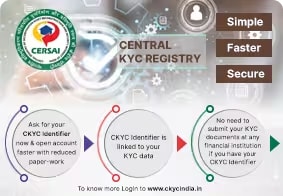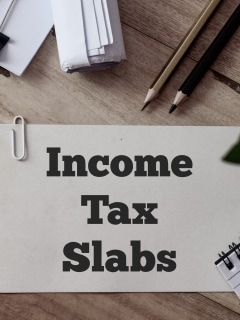Enjoy Zero Charges on All Commonly Used Savings Account Services
- About Us
- MD & CEO letter about the bank
- MD & CEO
- Our History
- Letter to Shareholders on the 1st Annual Report after Merger
- Letter to Shareholders on the 2nd Annual Report after Merger
- Letter to Shareholders on the 3rd Annual Report after Merger
- Letter to Shareholders on the 4th Annual Report after Merger
- Board of Directors
- Awards & Accolades
- News Room
- Investors
- Careers
- ESG
-
Customer care hotlineCall 1800 10 888
-
As per amendment in the Income Tax Rules, PAN or Aadhaar are to be mandatorily quoted for cash deposit or withdrawal aggregating to Rupees twenty lakhs or more in a FY. Please update your PAN or Aadhaar. Kindly reach out to the Bank’s contact center on 1800 10 888 or visit the nearest IDFC FIRST Bank branch for further queries.
-
-
FinFIRST Blogs
Finance
Major benefits of the new tax regime announced: Is the new tax regime better than the old one?
Summary: In Budget 2023, the government has announced significant benefits to the new tax regime, encouraging people to switch to it as it is simple and easy to follow without too many deductions and exemptions. Read on to learn the major differences between the old and new regime.

Before Budget 2023, the middle class had a lot of expectations from income tax since there weren't many changes made to it in the last few years. In Budget 2023, the Union Finance Minister obliged. But she chose to focus on the new tax regime to improve it and encourage people to shift to it as it is simple and easy to follow. In this article, we will focus on six major announcements in Budget 2023, out of which five are related to the new tax regime.
1) Reduction in the number of income tax slabs
Earlier, the new tax regime had six income tax slabs. In Budget 2023, the Union Finance Minister has proposed to reduce the number of income tax slabs to 5 as follows,
Total income (Rs) |
Tax rate |
Up to 3,00,000 |
Nil |
3,00,001 to 6,00,000 |
5% |
6,00,001 to 9,00,000 |
10% |
9,00,001 to 12,00,000 |
15% |
12,00,001 to 15,00,000 |
20% |
Above 15,00,000 |
30% |
READ MORE
2) Increase in basic exemption limit
The basic exemption limit was Rs 2,50,000 under the new tax regime. In Budget 2023, the Union Finance Minister proposed increasing the basic exemption limit to Rs 3,00,000. It means an individual with a gross annual income of Rs 3,00,000 will be exempt from taxation.
3) Standard deduction
Earlier, the standard deduction under Section 16 was allowed only under the old tax regime enabling a salaried individual to avail of a standard deduction of Rs 50,000 from their taxable income.
In Budget 2023, the FM has proposed extending the benefit of the standard deduction to the new tax regime. A salaried employee can now avail of a standard deduction of Rs 50,000 from their taxable income under Section 16 in the new tax regime. They don’t need to submit any investment or expense proof to avail of this.
4) Increase in rebate limit
Earlier, an individual could claim a maximum rebate of Rs 12,500 under Section 87A of the Income Tax Act if their total income was up to Rs 5 lakhs. In simple terms, an individual could save a net tax of Rs 12,500 on an income of Rs 5 lakhs.
In Budget 2023, the FM proposed increasing the income threshold for claiming the rebate to Rs 7 lakhs in the new tax regime. It means an individual with a gross annual income of Rs 7 lakhs will not be required to pay any income tax.
The basic exemption limit is Rs 3,00,000. On an income of Rs 3,00,001 to Rs 7,00,000, the income tax as per the income tax slabs comes to Rs 25,000. With the rebate under Section 87A, an individual can save a net income tax of Rs 25,000 for a total gross income of Rs 7 lakhs. So, the rebate amount will double from the earlier Rs 12,500 (for an income of Rs 5 lakhs) to Rs 25,000 (for an income of Rs 7 lakhs).
If your income is in the Rs 5 to 7 lakhs range, and if you have few deductions and exemptions to claim, it will make sense for you to shift to the new tax regime.
5) Reduction in surcharge
Earlier, individuals with an annual income of Rs 5 crores and above had to pay a surcharge of 37%, resulting in a peak tax rate of 42.74%. In Budget 2023, the FM proposed bringing down the 37% surcharge rate to 25%. The change in tax rate will be applicable in the new tax regime and will result in the 42.74% peak tax rate coming down to 39%. So, high-income earners can look forward to some tax relief with this income tax rate change.
6) Tax exemption limit on leave encashment to be increased
Non-government salaried employees get tax exemption on leave encashment on retirement. Earlier, the maximum limit for tax exemption was Rs 3 lakhs. The limit was fixed way back in 2002 when the salaries were low. In the last 20 years, salaries have risen significantly, so the government has decided to review the tax exemption on leave encashment on retirement.
In Budget 2023, the Finance Minister has proposed to increase this tax exemption limit on leave encashment on retirement to Rs 25 lakhs.It means a non-government salaried employee will not be required to pay any income tax on the amount (up to Rs 25 lakhs) received on leave encashment on retirement. Any leave encashment amount above Rs 25 lakhs will be taxed as per the individual slab rate.
The new tax regime will be the default regime
The Government wants to encourage people to adopt the new tax regime. That is why most of the tax benefits have been given to the new tax structure, making it lucrative.
The Union Finance Minister also announced that the new tax regime would be the default when filing Income Tax Returns (ITR). Anyone who wants to file returns using the old tax regime will have to select it and accordingly proceed with filing their income tax returns.
New vs old tax regime
The new tax regime is simple and straightforward, with five easy-to-understand tax slabs. Post the budget, the FM, in an interview, said that she would like to have low tax rates which are easy to understand. She added that the low tax rates would leave more money in an individual’s pocket, and with a little bit of research, an average citizen can become the best judge to decide how to spend/invest that money.
Currently, under the old tax regime, individuals use various exemptions and deductions to spend/invest money for buying insurance and investing towards financial goals under various sections of the Income Tax Act. Section 80C (for life insurance and investments) and Section 80D (for health insurance) deductions are the most commonly used. These deductions are not available in the new tax regime.
To decide whether you should continue with the old tax regime or shift to the new one, you need to calculate which one saves you more tax. Also, when you shift to the new tax regime, you will have to forego most deductions and exemptions. Even without the deductions, it is advisable to be disciplined enough to buy life insurance and health insurance for self and family and follow goal-based financial planning and invest accordingly rather than investing for just income tax benefits.
IDFC FIRST Bank has partnered with leading insurance providers offering curated products with expert advice. With Term Insurance solutions, you get substantial life cover at affordable premiums. Find the right coverage amount and buy personalised products with multiple add-ons.
Disclaimer
The contents of this article/infographic/picture/video are meant solely for information purposes. The contents are generic in nature and for informational purposes only. It is not a substitute for specific advice in your own circumstances. The information is subject to updation, completion, revision, verification and amendment and the same may change materially. The information is not intended for distribution or use by any person in any jurisdiction where such distribution or use would be contrary to law or regulation or would subject IDFC FIRST Bank or its affiliates to any licensing or registration requirements. IDFC FIRST Bank shall not be responsible for any direct/indirect loss or liability incurred by the reader for taking any financial decisions based on the contents and information mentioned. Please consult your financial advisor before making any financial decision.
The features, benefits and offers mentioned in the article are applicable as on the day of publication of this blog and is subject to change without notice. The contents herein are also subject to other product specific terms and conditions and any third party terms and conditions, as applicable. Please refer our website www.idfcfirstbank.com for latest updates.


 What's special about us
What's special about us



















